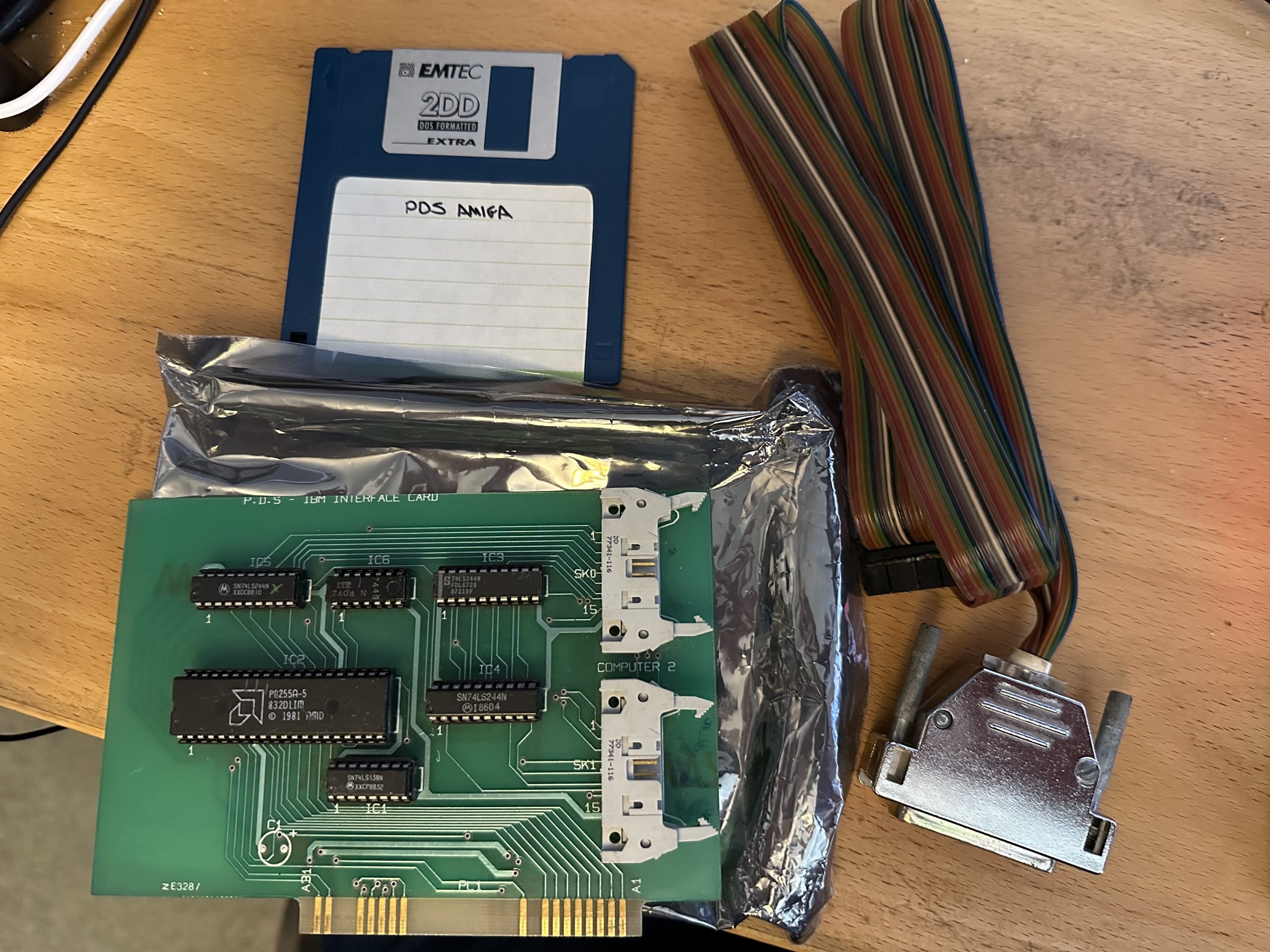Back when I was writing Ballistix for DMA Design; my first game, I started on the C64 using Laser Genius, an Assembler on the machine itself. This was a great assembler, and I wrote a lot of cool things with it, including the “basics” of the game Ballistix. This included the scrolling, and the multiplexor. But to do it properly, and I needed a proper system, and to aid in that, Dave got me a PDS (Programmers Development System).

PDS was a PC based cross assembler, allowing me to write code on a PC with all it’s memory, Harddisk, and faster processor. On the C64 it could take up to 20 minutes to assemble from floppy disk – and that was with a fast parallel disk drive, not Commodores crappy, slow, serial one. But on the PC, it finished assembling before my finger left the “assemble” button, it was amazing.

The PC I got was one of these – an Amstrad 2286 PC, with 40MB HardDrive. Quite the step up from a C64. The first thing I had to do, was transfer all my source code over to the new system, and this was a complex process that involved connecting up the PC, plugging in the keyboard, and typing it all back in again. It didn’t take that long fortunately, and in a couple of days, I was back up and running.
The C64 devkit consisted of a PC card to plug into my lovely new PC, and a parallel cable down to the C64‘s userport, and a boot floppy. It’s also one of the few systems I’ve not managed to keep a hold of over the years – and I’ve been looking for them for decades now.
Step in Kev Brady from the ZX Spectrum Next team, who happens to have 3 of them!! Not only that, but an AMIGA Setup! I knew these existed as Dave used it to develop Blood Money on the Amiga, but no one ever seemed to have it. Well, Kev has the newer PDS2 version. Like the C64, it consisted of a simple cable to the Amiga’s parallel port, making it much simpler to clone.
Kev – bless his cotton socks, has also been kind enough to lend me it!! it arrived last week, just in time for my Amiga A4000 to be fixed, so using Rob Smith’s Amiga floppy drive for the PC, I was able to back up the valuable Amiga boot disk, and make new copies of it, and I’ve worked out the cable pinouts which will allow me to copy the cable.
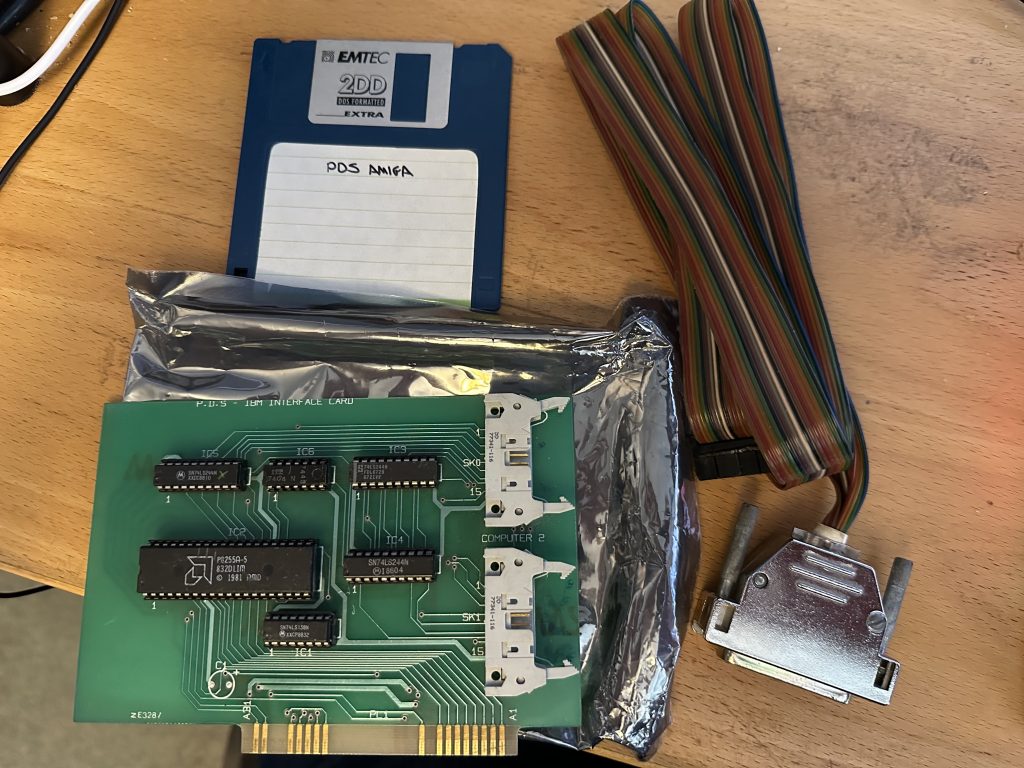
Now, the PC card is a much harder prospect. First I’d have to work out all the connections, and recrate it. Now step in “The Internet”. Yep, some kind soul has already done this…
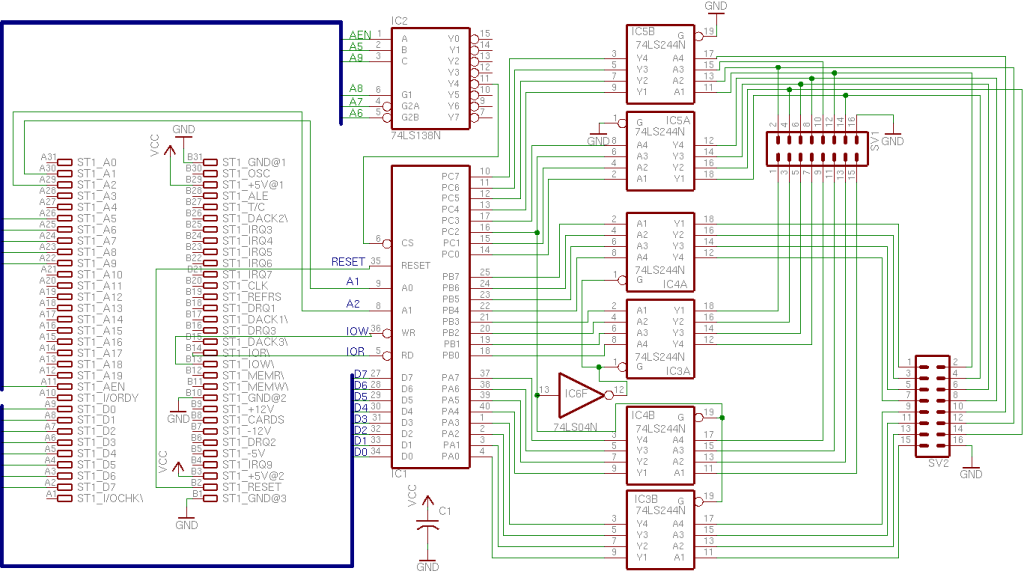
Now, with the likes of PCBWay to make boards, this should in theory, be an easy thing to recreate – if I can find all the parts, AND work out how to make boards! Of course, a complication to this, is that the P8225A-5 chip it uses, is long since out of use and production, so I’ll need to source a suitable replacement.
Interestingly…. This chip has given me an idea to use in my RaspberryPi to Commodore Plus/4 CPU replacement. it’s basically a multiplexor/buffer, and I can use it to set up to 24 lines, from just 10… that’s pretty cool. Anyway, that’s minor side line.

This is the main screen from the PDS 1 devkit – the Z80 one. Now I’ve got my Amiga A4000 back, I’ll need to get my old PC setup and put in this card, and then see if I can get it downloading some code. The ideal would be the C64 version, as that’s just goes to the C64‘s user port, though I’m waiting for Jason from the RMC DevDen to workout the wiring.
In the meantime, I’ve received the parts I need to remake the Amiga cables, and I’ve worked out the wiring for it.
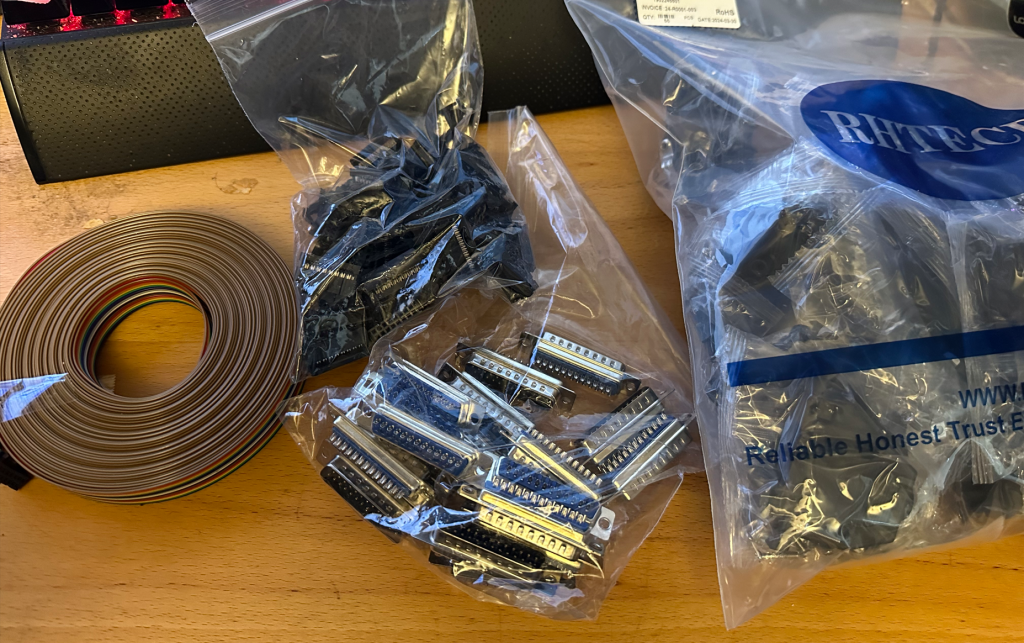
This is the PDS card to Amiga connections. It’s a nice simple connection, as the devkit to Amstrad, ZX Spectrum etc requires additional hardware.

I do need to clear my electronics desk as it’s covered in stuff at the moment. Once I do and have the old PC setup, I can then test the cable and make a spare to send to Jason at the DevDen.
Longer term, I do want to make a new devkit system – basically a new way to talk to the old hardware, from a modern PC. I’m currently thinking a Pi Zero might do the trick, and it means the devkit can talk via TCP/IP instead of a physical wire. I think the Pi could also be a line driver for the Spectrum etc, meaning it doesn’t need the /IO chips etc…
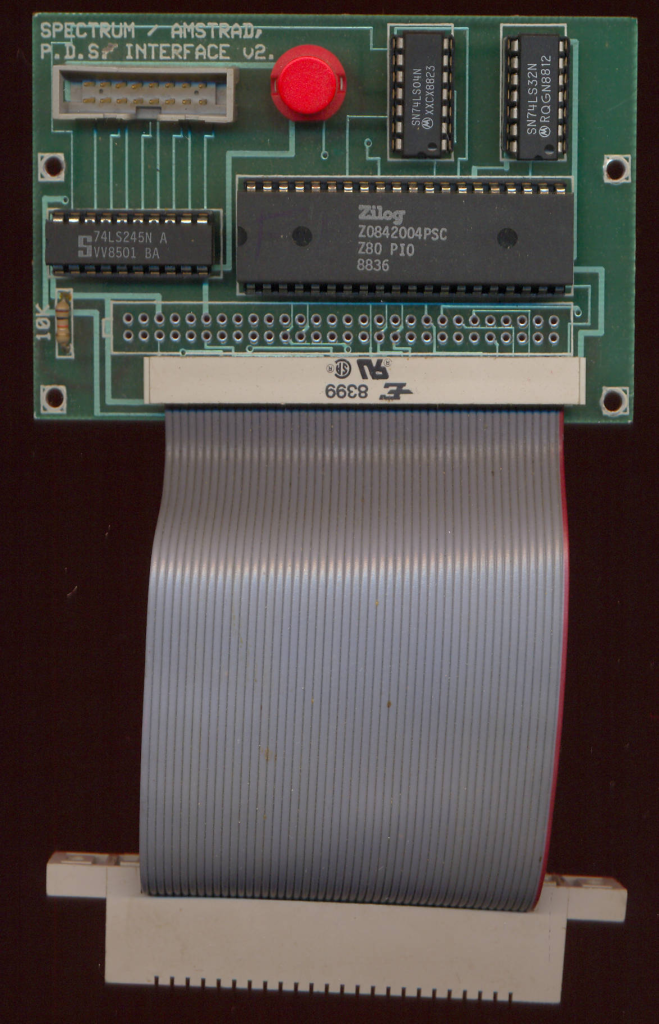
This is the Spectrum/Amstrad version, presumably it’s just the edge connector that needs changing on these cards.

The Z80 one is basically a PIO chip to buffer the data, as the edge connector attaches directly to the Z80‘s main BUS.
With so much info – and some of the software, still surviving, it’s a shame the PC cards are so rare. There is an EAGLE cad file, but for some reason, when I make GERBER files, it’s shrinking the board. I have a measurement for the PC edge connector, so I have a rough idea the size it should ne, and it’s coming in way too small.
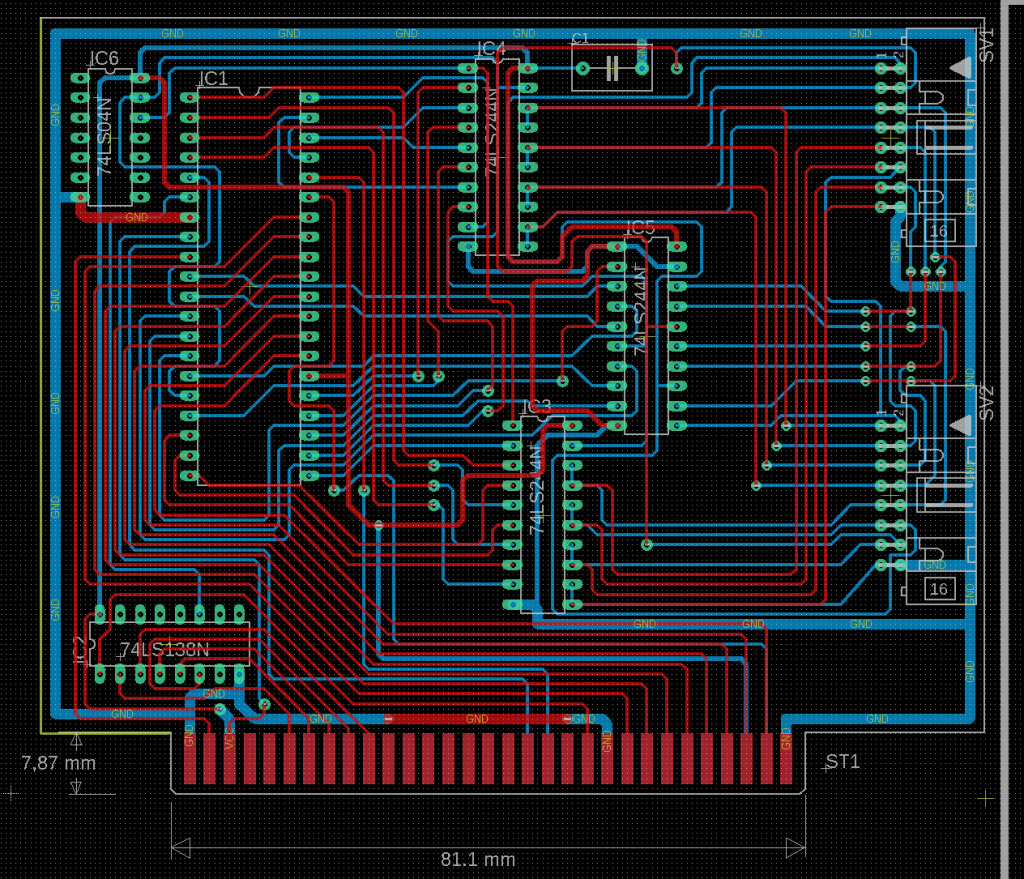
That’s damn annoying, as with the help of MarkFixesStuff, I got the PCBWay pricing down to manageable amounts, and I could have tried to remake the board as well…
Interestingly, this appears to be a remake of the board, but it’s the same chips, layout and pinouts, so would work just fine. But as it’s coming out at just 61.9mm, it’s clearly too small…

Still, first things first… get the Amiga setup again, then get my old PC down, and set up beside it – though this means moving my 40″ TV from my Desk, and mounting it on the wall behind it to free up some space – it’s never easy!
I’ve sourced PDS software for 6502, Z80 and thanks to Kev; 68000. It’d be lovely to get them connected to real machines again, but one step at a time….
If you’re interested to watch someone use it, then I’d recommend joining Jasons DevDen youtube Channel. There’s nothing there yet, but he has some big plans!

